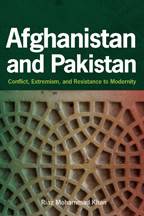
Reviews
More scholars will probably re-examine the dramatic vicissitudes that have transpired in the tri-border region in the near future. Kaufman's exhaustive research will serve as an important resource for all of them.
The main contribution of this work is its rich empirical quality. To shed light on the struggle over borders, the author has consulted American, British, French, Israeli, and United Nations (UN) documents, along with some Arabic material. The book is theoretically informed, drawing on the academic literature of subjects such as border conflicts, sovereignty, borderlands, and state formation without necessarily seeking to contribute substantially to the development of theories... The work's painstaking attention to detail makes it extraordinarily valuable for scholars of Israel-Lebanese-Syrian relations and essential for those interested in border disputes between these countries.
A meticulously detailed, carefully written account of the geopolitics of a very small but highly contested area... The construction of the book unfolds like an elegant mathematical proof, in which the reader is shown how a led to b and then to c, and how a sequence of various elements, piled on top of one another in chronological succession, have led to this apparently insignificant area becoming a major point of contestation in the Arab-Israeli conflict.
Kaufman examines the connections and links that complicate the problem of the tri-border region between Lebanon, Syria, and Israel in a sensitive and sympathetic manner. Moreover, the work manages to explain a complex technical and factual problem in a straightforward manner.
Kaufman has knitted together maps, archives, and other sources to give a comprehensive view of a collection of issues (fuzzy borders, water resources, state sovereignty, and non-state actors) in a complicated little corner of the Levant that has not hitherto received serious academic treatment. Given that this little corner is crucial to the future of relations among the three states, the author has done a major service in offering a rigorous, balanced, detailed, and fascinating interpretation.
Book Details
List of Maps and Figures
Acknowledgments
Introduction
Part I: Mapping the Tri-Border Region
1. Colonial Mapping
2. Mapping the Mandates
3. After Independence
4. The United Nations: Mapping, Mediating, and
List of Maps and Figures
Acknowledgments
Introduction
Part I: Mapping the Tri-Border Region
1. Colonial Mapping
2. Mapping the Mandates
3. After Independence
4. The United Nations: Mapping, Mediating, and Peacekeeping, 1949–2000
5. Cartographic Wars: The Israeli Withdrawal from South Lebanon and Beyond
Part II: Borders, Boundaries, and Frontiers, 1924-1982
6. The Making of the Tri-Border Region, 1924–1949
7. During and Between Wars: 1949–1973
8. Fatahland: How Lebanon Became a Frontline State
9. Whose Water Is This? Boundaries and Hydropolitics
10. Crossing Boundaries: The Trans-Arabian Pipeline and the Arab-Israeli Conflict
Part III: The Shebaa Farms Dispute and Beyond
11. A Fabricated Border Quandary?
12. The Shebaa Farms, Hizbullah, and Lebanese Sovereignty
13. Joha's Nail? Israel and the Shebaa Farms
14. Resolving the Dispute? The United Nations in the Tri-Border Region, 2000–2010
Conclusion: On Cartography, Sovereignty, and Conflict
Notes
Selected Bibliography
Index





